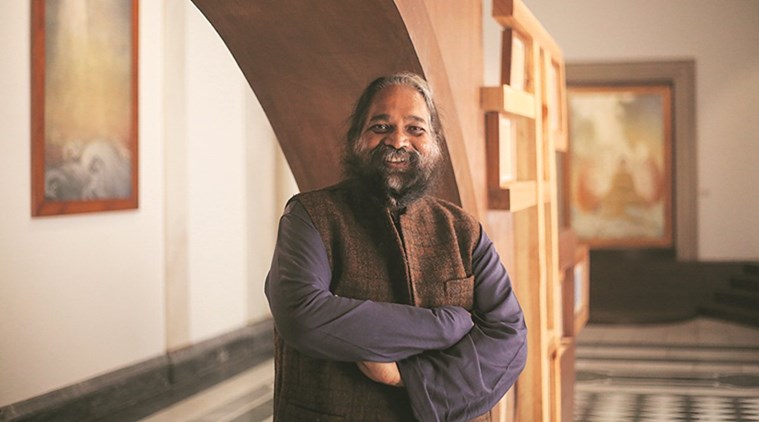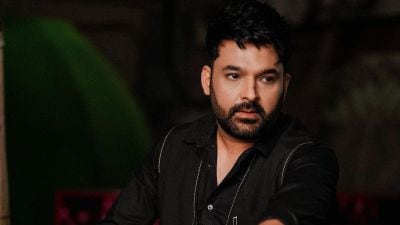- India
- International
‘People should seek solace in art like they do in films’
NGMA Director General Adwaita Gadanayak on getting a three year extension, working with schools and opening more branches of the NGMA
 NGMA Director General Adwaita Gadanayak. (Express photo by Tashi Tobgyal)
NGMA Director General Adwaita Gadanayak. (Express photo by Tashi Tobgyal)
Before your appointment as Director-General in the last term, you had shared a “vision” with the ministry. How much of that were you able to realise and what will be your objectives in the second term?
For the results to start showing, it will take at least eight to ten years. My primary focus has been to connect the public to art; people need to feel that this art is theirs, only then will they appreciate and enjoy it. People should not be intimidated, they should want to walk into the NGMA. We need to begin at the school level. In the last few years, we have had visits by groups of school students and have engaged with them through activities and not just the artwork on display. We also invited art teachers to discuss the challenges they face, and I want to invite principals of government schools to emphasise on the need to promote art education and discuss how we can provide support. Unfortunately, in India, art does not get the same respect as other subjects. We also want to interact with students from art colleges. We want to introduce opportunities for practical work — have studios for printmaking, ceramics. It is important to create a lively atmosphere and also bring together all the arts.
You put a lot of emphasis on exhibiting the previously unseen collection of the NGMA. Will that continue?
Almost 80 per cent of the NGMA collection had never been shared but now I think we have managed to share almost 50 per cent through exhibitions such as ‘Roopantar’, ‘Itihaas’, among others. We exhibited works of Bireswar Sen in South Korea and China. In the coming years, I want to have more such exhibitions and also showcase the works of younger artists. We are creating a team to recommend the young artists whom we should exhibit.
There is a grouse that the NGMA has not built a substantial collection of contemporary art. Will you be looking into that as well?

There are several gaps in our collection that we want to fill. We were earlier focusing on the renovation of the building, now that is done. I want to plan some big shows of contemporary artists and also acquire more works. We will purchase what we feel we can maintain. We are also looking at artists from the Northeast and considering opening a branch of the NGMA in Tripura, for which the state government is also involved.
In association with the Kiran Nadar Museum of Art, NGMA organised an India Pavilion at the Venice Biennale this year. Will we see more such public-private partnerships?
It is important to present Indian art on world stage. It was 150 years of Gandhi and we decided to present that at Venice, through artists who worked with Gandhi (Nandalal Bose), to someone like Jitish Kallat. Private-public partnerships are also very important; look at Tate or MoMA, all of them have collaborations.
Recently, you also designed the granite sculpture at the National Police Memorial in Delhi. In your own practise, as a sculptor, you have often worked with stone. Is that influenced by your childhood in Neulapoi (Odisha)? I believe your mother worshipped nature.
Neulapoi is between the Kapilash temple, dedicated to Shiva, and the Mahima Gadi temple, where it is believed that god is formless. My mother would worship nature, she would find form in formlessness. I did not understand what she was doing then, but now after studying so much and so many years of practise, I feel I understand that better. When families of the martyrs visited the Police Memorial, they went near the stone and seemed to interact with it. I feel, on our planet, stone is the oldest family member, its every layer has a history associated with it. It interacts with you, if you submit to it. It is believed that there are male and female stones, and they can be differentiated through texture, sound and other techniques. Male sculptures are made with female stones since they are stronger, and for female sculptures, which require heavy ornamentation, we use male stones. I want others also to feel the stone through my work. At one time, we sought spirituality through art.
How often do you get time to work in your own studio?
I have very little time. As an artist I want to do a lot more. For now, I am working on NGMA like my sculpture. At times, I carry my sketchbook and draw my observations. I am also designing several exhibitions myself.
What has been your biggest challenge in your first term? Also, when you were first appointed to the NGMA, there was a lot of talk on how it was because of your association with the BJP. What is your opinion about that now?
I think my biggest challenge has been to bring the public to the NGMA. If that is done, I would say we have been successful. The NGMA is not just meant for artists, but for people as well. They should seek solace in art, like theatre, films. Regarding my appointment, I think all of us need to work together for the promotion and betterment of art, the political party does not matter. I have worked as an artist.
More Lifestyle
Apr 23: Latest News
- 01
- 02
- 03
- 04
- 05


































